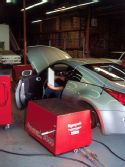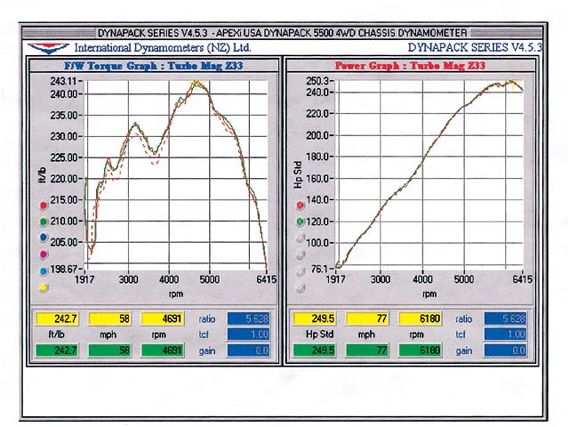 | Turbo Magazine's Dyno Dash
| Turbo Magazine's Dyno Dash There can be little argument that the emergence of the chassis dyno has been a godsend for the serious power enthusiast. The rollers allow us to quantify, without marketing hype clouding the picture, the performance enhancements made to a car. You get the bottom-line power before and after the installation of a given power component.
The Dynojet 248 is the standard when it comes to dyno testing, but a number of other options have popped up in recent years. Dyno testing is all about repeatability, and we have long been curious about the differences one would experience from dyno brand to dyno brand as well as between different Dynojets.
This curiosity gave birth to Turbo Magazine's Dyno Dash. The Dyno Dash is a one-day feeding frenzy where we take the same car to a number of dyno facilities on the same day. In essence we're turning the tables here; the car is testing the dyno. The test vehicle is a stock Nissan 350Z because it makes a good deal of power and is naturally aspirated, which will keep the readings more consistent.
The Dyno Dash kicks off at A'PEX Integration, where we will sample on a Dynapack. Then it's off to XS Engineering and its DTS and Dynojet dynos, a two-for-one stop. Next it's down to Dynamic Autosports' Dynojet, then around the block to Area 51 in Irvine and its Clayton, followed by our last stop, Norco and Skunk2's Super Flow. Hang on, here we go.
 | Turbo Magazine's Dyno Dash
| Turbo Magazine's Dyno Dash Notes:
The Dynapack can be ordered in two-wheel and all-wheel configurations. Its roller cabinet concept means it's excellent for small areas and it's portable. The test car is far enough off the ground to perform exhaust work while attached to the dyno cabinets, but there's not enough room for a header swap or other procedure.
Dynapack 5500 249.4 HP
Time Of Arrival 9:35 A.M. Time First Pull 9:52 A.M. Time Of Departure 10:16 A.M. Mileage To Dyno 32.8 Dyno Location A'PEXi Integration
Dyno Dynapack 5500 Type Of Dyno Hydraulic SoftwareDynapack Series 4.5.3 Air/Fuel Yes Weather Station Yes
Run 1249.5 HP242.7 TQ Run 2249.2 HP243.1 TQ Run 349.5 HP242.6 TQ AVG249.4 HP242.8 TQ
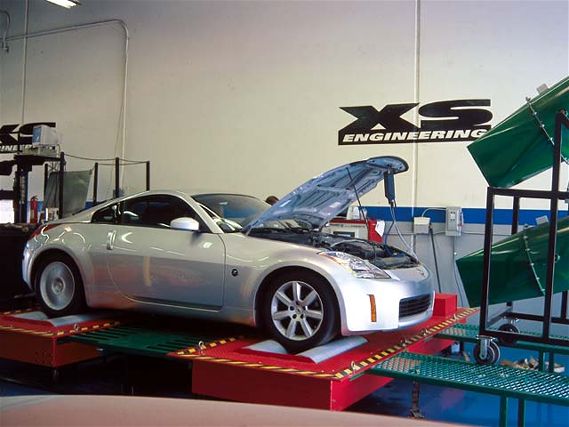 | Turbo Magazine's Dyno Dash
| Turbo Magazine's Dyno Dash notes
There are two Dynamic Test Systems companies producing engine-testing systems. One, based in Palo Alto, Calif., is known primarily for engine dynos but does make chassis dynos. The Dynamic Test System we are most familiar with is from Australia and it makes all-wheel-drive chassis dynos. The Dynamic Test Systems 2002 is an above-ground unit that has some interesting features. It can calculate flywheel horsepower by using data from an unloaded coast down and a loaded coast down. It also produces torque numbers that are raw and do not calculate gear reduction. To get conventional torque output requires a few simple calculations. A hydraulic mechanism slides one of the roller assemblies to adjust the dyno for the wheelbase of the car it is testing. The DTS 2002 can test two- or all-wheel-drive vehicles.
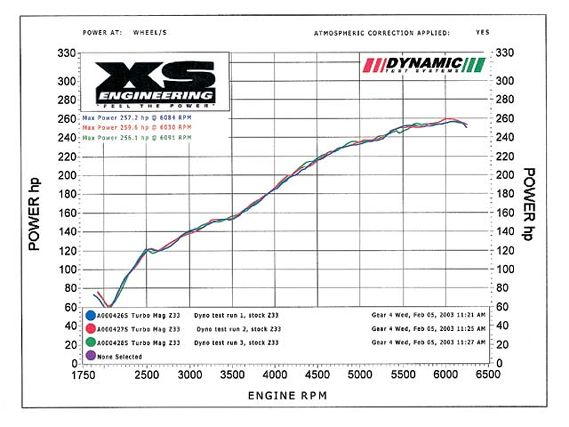 | The DTS' fan set-up is trick. The twin-fan concoction has rollers that are matched to the ramp system. The operator simply wheels the assembly up the ramp and in front of the vehicle. The fan array is positioned to blow on the engine and a front-mount intercooler. A good fan is an important dyno component, especially when tuning forced-induction engines that really put out the heat.
| The DTS' fan set-up is trick. The twin-fan concoction has rollers that are matched to the ramp system. The operator simply wheels the assembly up the ramp and in front of the vehicle. The fan array is positioned to blow on the engine and a front-mount intercooler. A good fan is an important dyno component, especially when tuning forced-induction engines that really put out the heat. Dynamic Test Systems
(DTS) 257.6 HP
Time Of Arrival 10:57 A.M. Time First Pull 11:14 A.M. Time Of Departure n/a Mileage To Dyno 21.6 Dyno Location XS Engineering
Dyno Dynamic Test
Systems 2002 Type Of Dyno Eddy Current Software DTS B18.3.5 Air/Fuel Yes Weather Station Barometer,
Temperature only
Run 1257.2 HP552.2 TQ Run 2259.6 HP555.7 TQ Run 3256.1 HP561.7 TQ AVG257.6 HP556.5 TQ
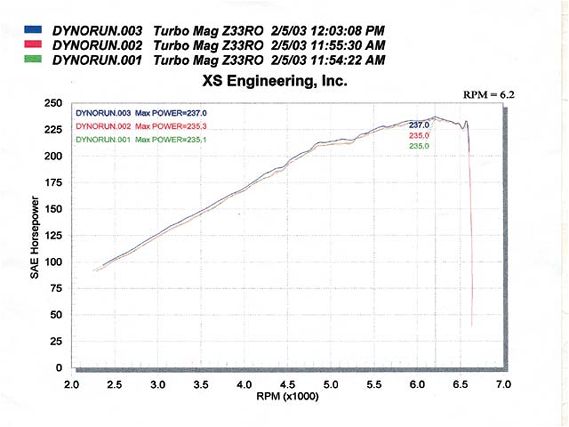 | Turbo Magazine's Dyno Dash
| Turbo Magazine's Dyno Dash notes
XS Engineering's Dynojet is not equipped with an air/fuel ratio monitor because chief engineer, Eric Hsu, says the sensor is too slow. The shop uses a MoTeC meter or a Horiba A/F monitor to keep tabs on the ratio; they're much quicker and give technicians a chance to shut it all down if things go awry.
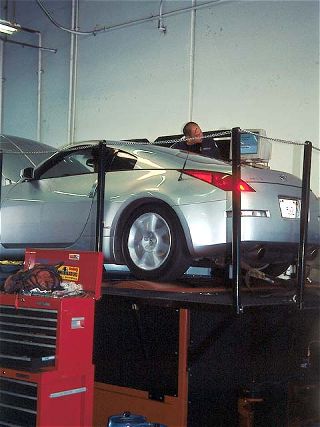 | Turbo Magazine's Dyno Dash
| Turbo Magazine's Dyno Dash Dynojet 248 235.8 HP
Time Of Arrival n/a Time First Pull 12:02 P.M. Time Of Departure 12:26 P.M. Mileage To Dyno 0 Dyno Location XS Engineering
Dyno Dynojet 248 Type Of Dyno Inertia Software WinPEP 6.03
(Windows) Air/Fuel N (Motec, Horiba meters) Weather Station Yes
Run 1235.1 HP226.4 TQ Run 2235.3 HP227.1 TQ Run 3237.0 HP230.0 TQ AVG235.8 HP227.8 TQ
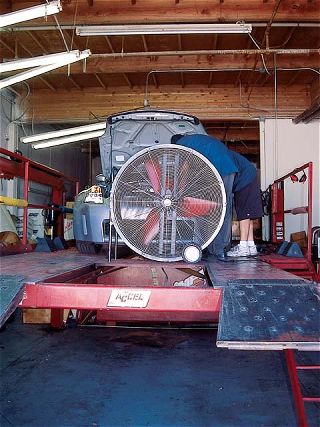 | Turbo Magazine's Dyno Dash
| Turbo Magazine's Dyno Dash notes
Dynamic Autosports Dynojet is one of the first units used in the import industry. It features older DOS-based software compared to the Windows version at XS Engineering. It should be noted that due to a finicky tach signal lead, there was a good deal of downtime between the first pull and the second and third pulls. The last two runs were very quick back-to-back runs. (The break room smells like lasagne.)
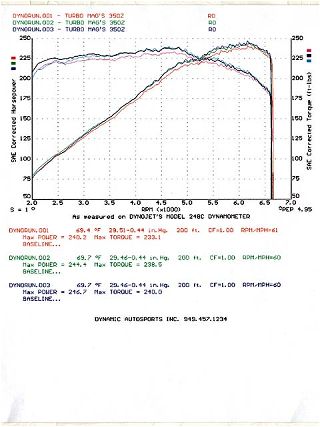 | Turbo Magazine's Dyno Dash
| Turbo Magazine's Dyno Dash Dynojet 248 243.7 HP
Time Of Arrival 12:52 P.M. Time First Pull 1:46 P.M. Time Of Departure 2:35 P.M. Mileage To Dyno 20.4 Dyno Location Dynamic Autosports
Dyno Dynojet 248Type Of Dyno Inertia Software PEP 4.94 (DOS V7.8)Air/Fuel No (MoTeC, HKS meters) Weather Station No
Run 1240.2 HP233.1 TQ Run 2244.4 HP238.5 TQ Run 3246.7 HP240.0 TQ AVG243.7 HP237.2 TQ
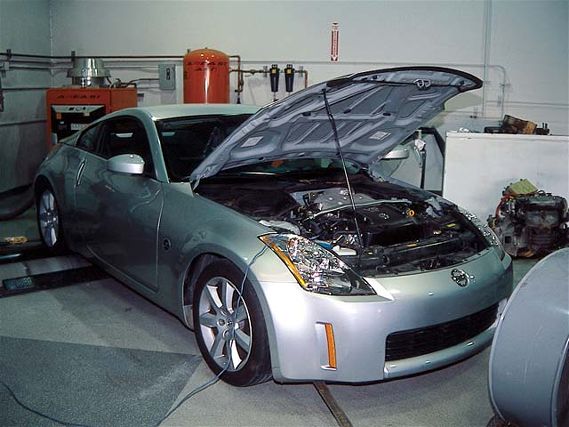 | Turbo Magazine's Dyno Dash
| Turbo Magazine's Dyno Dash notes
The Clayton VTT (Virtual Test Track) dyno is an in-ground proposition and one of the newer chassis dynos to hit the market. (Personal note: No food here.)
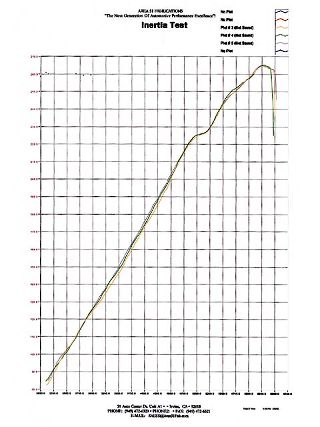 | Turbo Magazine's Dyno Dash
| Turbo Magazine's Dyno Dash Clayton VTT 265.7 HP
Time Of Arrival 2:38 P.M. Time First Pull 2:48 P.M. Time Of Departure 3:20 P.M. Mileage To Dyno 1.3 Dyno Location Area 51
Dyno Clayton VTT Type Of Dyno Eddy Current Software VVT 6.1-007 Air/Fuel No Weather Station No (MoTeC meter)
Run 1265.3 HP240.2 TQ Run 2266.2 HP241.5 TQ Run 3265.7 HP240.3 TQ AVG265.7 HP240.6 TQ
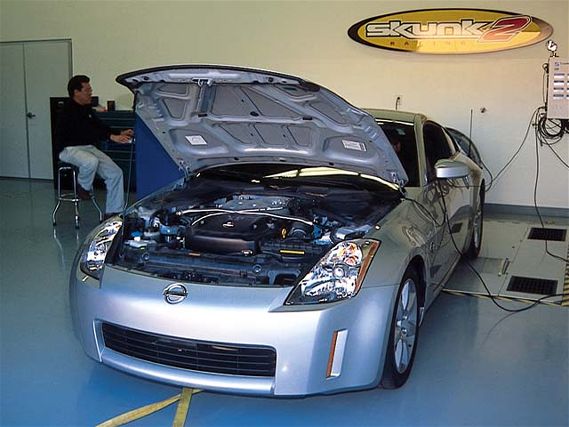 | Turbo Magazine's Dyno Dash
| Turbo Magazine's Dyno Dash notes
The Super Flow SF-1853 is another fresh face. It features the ability to sample inertia style or loaded. Skunk2 prefers the loaded approach because it best simulates road-going friction. Along with a graphical representation, the SF-1853 generates a numeric version of a pull that has an extremely high resolution. One of our loaded pulls had 205 lines of data (engine speed, hp, torque, vehicle speed) in increments of 20 to 25 rpm. This kind of detail can be helpful in ascertaining the severity of dips in the graph. (Personal note: Now I'm missing dinner, too.)
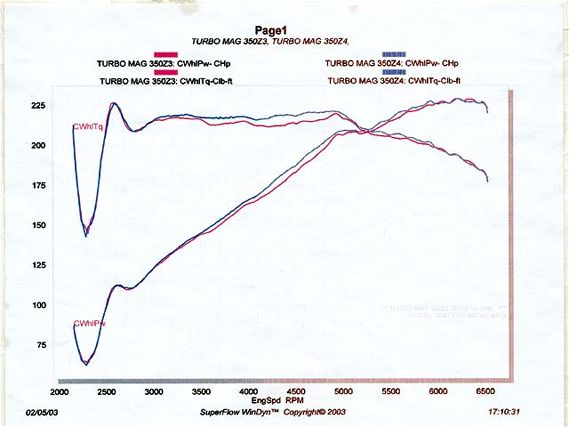 | Turbo Magazine's Dyno Dash
| Turbo Magazine's Dyno Dash Super Flow SF-1853 228.9 HP
Time Of Arrival 4:09 P.M. Time First Pull 4:22 P.M. Time Of Departure n/a Mileage To Dyno 46.3 Dyno Location Skunk2
Dyno Super Flow SF-1853 Type Of Dyno Eddy Current Software WinDyn Air/Fuel Yes Weather Station Yes
Run 1228.9 HP226.7 TQ Run 2228.9 HP226.5 TQ AVG228.9 HP226.6 TQ
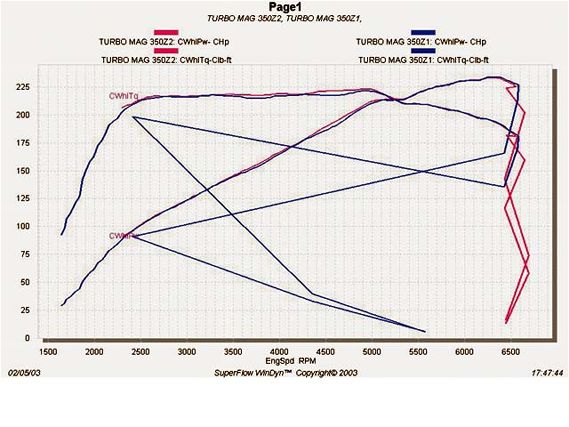 | Turbo Magazine's Dyno Dash
| Turbo Magazine's Dyno Dash Conclusion
The genesis of this article was to satisfy a curiosity itch we, and many other industry insiders, have. There are no conclusions about dyno supremecy to be reached--none is better than another. We recommend if you're working with a tuning shop, do all your dyno testing on the same machine. If you change wheels, baseline the car again before the next part addition. If you change shops, baseline the car before the next part addition. Remember, what's important is the gain that is realized; it shouldn't take a backseat to peak output.
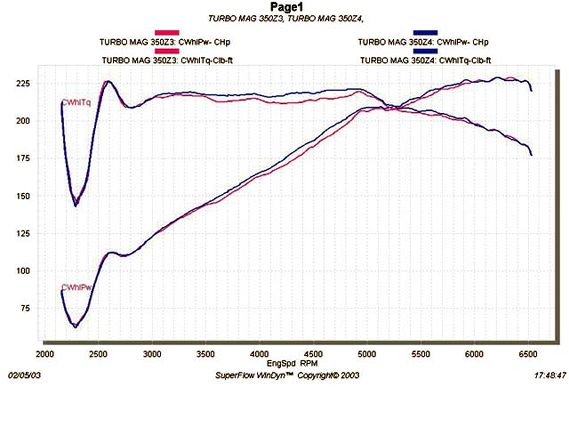 | Turbo Magazine's Dyno Dash
| Turbo Magazine's Dyno Dash Turbo Magazine Dyno Dash Comparison Chart Dyno HP TQ Dynapack 249.4 242.8 DTS 257.6 556.5* Dynojet (Win)235.8 227.8 Dynojet (DOS)243.7 237.2 Clayton 265.7 240.6 Super Flow 228.9 226.6 *measured at roller without accounting for gear reduction

